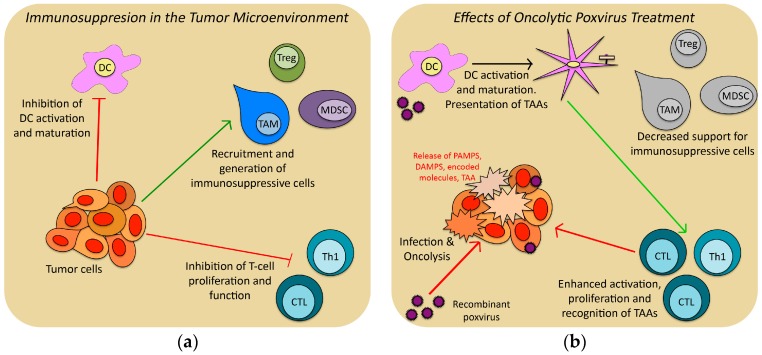Figure 1.
Schematic diagram showing how recombinant oncolytic viruses (OV) therapy can overcome the immunosuppressive effects of the Tumor Microenvironment (TME): (a) Tumor cell secretion of a variety of cytokines and other factors can inhibit productive immune response by dendritic cells (DC), cytolytic T-cells (CTL) and type-1 helper T-cells (TH1) and generate protective immunosuppressive cell populations such as tumor-associated macrophages (TAM), myeloid-derived suppressor cells (MDSC) and regulatory T-cells (Treg); (b) Intratumoral treatment with OV therapy can overcome the immunosuppressive TME by lysing tumor cells (releasing inflammatory signals), expressing immunostimulatory molecules within the TME (reversing the inhibition by tumor cells and removing the stimuli for immunosuppressive cells), and over-expressing tumor-associated-antigens (TAAs) for DC uptake and T-cell activation.

